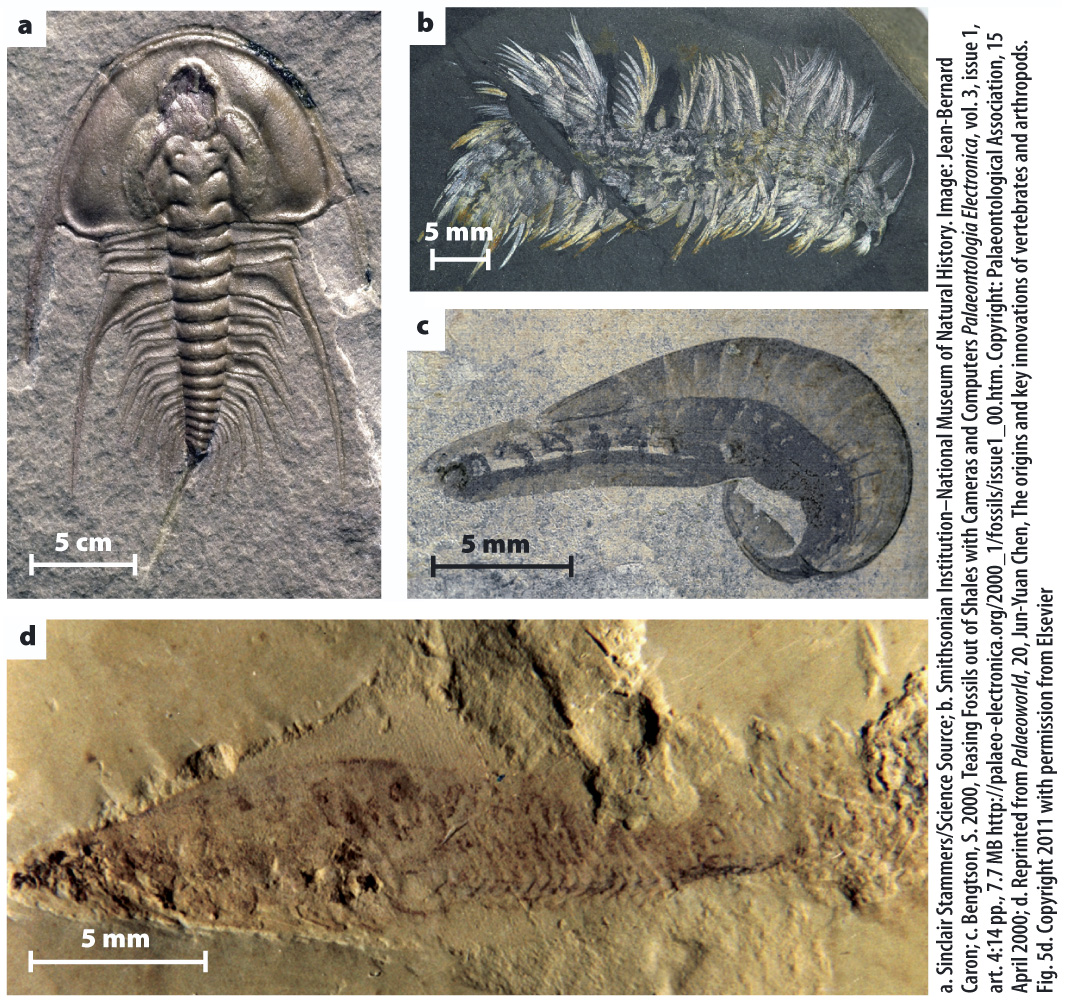The animal body plans we see today emerged during the Cambrian Period.
Ediacaran fossils differ markedly from the shapes of living animals, but in the next interval of geologic history, the Cambrian Period (541–

These exceptional windows on early animal evolution show that, during the first 40 million years of the Cambrian Period, the body plans characteristic of most bilaterian phyla took shape in a transition sometimes called the Cambrian explosion. Sponges and cnidarians radiated as well, producing through time the biomass-
Scientists sometimes argue about whether the name “Cambrian explosion” is apt. The fossil record makes it clear that bilaterian body plans did not suddenly appear fully formed, so the event was not truly “explosive.” Rather, fossils demonstrate a huge accumulation of new characters in a relatively short period of time, during which the key attributes of modern animal phyla emerged. For example, living arthropods have segmented bodies with a protective cuticle, jointed legs, other appendages specialized for feeding or sensing the environment, and compound eyes with many lenses. Cambrian fossils include the remains of organisms with some but not all of the major features present today in arthropods. In short, the first 40 million years of Cambrian animal evolution ushered in a world utterly distinct from anything known in the preceding 3 billion years.